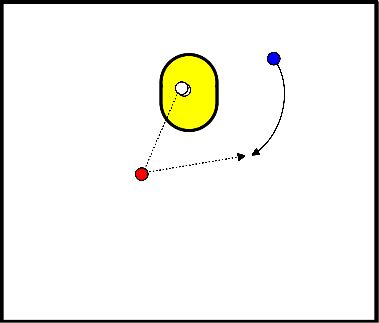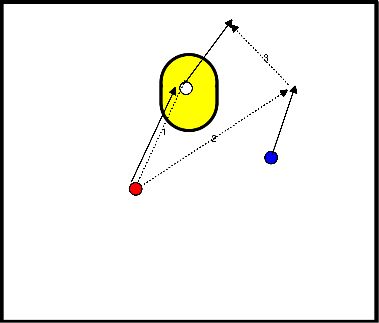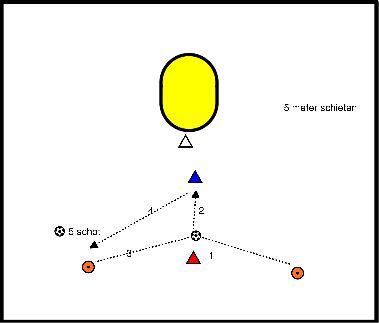Korfball drills for technique shoot / score / shot
- Lady under the post throws out
- Receiver of the ball shoots,
- The ball that is caught goes back to the shooter,
- The other lady comes in sight of the ball carrier and gets the ball.
- She shoots.
- Then she receives the ball back and the first lady comes in sight of the receiver and shoots.
- After 10 shots, there is a change of function.
- Each player comes 3x under the post.
- Which trio scores more than 15 times

- Under the post, the ball is played to the outside,
- The other lady runs away from the ball carrier and gets a deep ball, the pole lady connects, gets the ball and shoots.
- The first lady catches the ball and plays it back to the shooter who places the ball deep again, etc.
- Which team will score first 3 times

- Shoot with a pair at the basket between 3 and 5 metres.
- Change function after 5 shots
- Score 15 times
- Idem but now the ball is deliberately placed about 0.5 meter next to the body.
- Run/jump into the ball
- Scoring 10x
- Player always starts from the middle.
- Player places the ball to the passer and runs to pylon 1, receives the ball back and shoots.
- Rebound catches it
- Player walks to the middle and walks to the next pylon.
- You do this in turns 1 player 1 minute
- Number of goals scored counts.
- Variant:
- If you catch the ball and it falls on the ground, you lose a point.

- Player 1 starts at a few meters from the basket to start a distance shot.
- The ball is caught by player 2 and player 1 makes a run through.
- The ball is caught again and player 1 makes a short chance from behind the basket.
- If none of these 3 chances are seated, the player must do it again.
- If one of the 3 chances is placed, the next player may try again.
- Two players per basket.
- At five metres in front of the basket stands an attacker, who shoots 3x at the basket, each goal is two points.
- Underneath the basket is a rebounder.
- The rebounder under the basket must catch the ball within one bounce, otherwise one point is deducted from the total score.
- After three shots the rebounder becomes shooter and the shooter becomes rebounder.
- Which team will have 15 points first?
- Set up six baskets.
- Under each basket, a regular player with the ball, the other players at the centre spot.
- Other players make two through balls on each basket. After the round, change leaders, then another round.
- On each basket, make one fly ball to the left. After the round, change helpers, then another round.
- On each basket, make one fly ball to the right. After the round, switch players, then another round.
- Three at a basket
- Two shooters in front of the basket at shooting distance 4-6 metres, one rebounder under the basket.
- The shooters take turns shooting, whoever scores first can stay at the basket.
- The losing shooter changes to the rebounder and the new battle begins.
- Option: The shooter who scores three goals first may remain standing.
- Option: In foursomes, you have two teams (one shooter, one rebounder), the losing team switches positions between them.
- One shooter.
- Two catchers.
- Two balls.
- The shooter shoots from an easy distance.
- Because two balls are used, the pace of shooting is high.
- The goal is not to get sloppy but to keep shooting technically and to "automate" the shot.
- You can vary with locations or types of shot (short/distance/shot-through) and so on.
- In two groups you are going to shoot.
- 1 person is going to shoot, 1 catch, 1 hoop
- The person is going to shoot
- At every goal the person who takes the hoop, takes a hoop and puts it over the shooter.
- The shooter has to stand there until someone has scored.
- This way you keep on turning.
- When there are no more hoops you change from basket.
- Who has the most after 5 minutes, has won.
- Practicing throwing and releasing on the short and long line.
- The declarer stands far from the basket. The archer stands in front of the box at the side of the declarer.
- The archer walks up to the declarer (the short line), receives the ball and shoots.
- The declarer becomes a shooter, the shooter walks to behind the basket, the catcher arrives at the position of the declarer, after the ball is thrown to the next declarer.
Variant:
- The shooter chooses the long line after feinting towards the short line or basket.
- Both variations can be trained with the opponent near the shooter, so that the declarer learns to judge when someone is free.
- Dose the defender. When using a defender, the 2nd declarer (who in fact does nothing) can act as a defender.
- The rotation after the exercise is: declarer becomes defender, defender becomes gunner, gunner becomes catcher and catcher becomes declarer (after a combination with a player).
- Practicing throwing and releasing on the short and long line.
- The declarer stands far from the basket. The archer stands in front of the box at the side of the declarer.
- The archer walks up to the declarer (the short line), receives the ball and shoots.
- The declarer becomes a shooter, the shooter walks to behind the basket, the catcher arrives at the position of the declarer, after the ball is thrown to the next declarer.
Variant:
- The shooter chooses the long line after feinting towards the short line or basket.
- Both variations can be trained with the opponent near the shooter, so that the declarer learns to judge when someone is free.
- Dose the defender. When using a defender, the 2nd declarer (who in fact does nothing) can act as a defender.
- The rotation after the exercise is: declarer becomes defender, defender becomes gunner, gunner becomes catcher and catcher becomes declarer (after a combination with a player).







